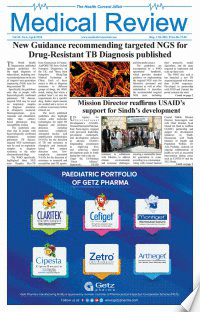The worsening of key indicators related to female health, education and social development is a key issue holding back Pakistan’s ability to meet global targets under the Sustainable Development Goals (SDGs). Pakistan has incorporated 169 targets under the SDGs into long-term planning frameworks such as Vision 2025 and the National Health Vision 2016 – 2025. New insights on Pakistan’s progress in achieving these policy objectives were discussed by Federal and Provincial Government Officials, Researchers and Civil Society Experts at a Conference on ‘Pakistan’s Challenges of Health and Nutrition in the context of Sustainable Development Goals – issues and progress’ held recently at Aga Khan University Karachi.
Barrister Pir Mujeeb-ul-Haq, Sindh Convener of the Parliamentary Task Force on the Sustainable Development Goals delivered the opening address at the conference. It was attended by prominent officials including Dr. Assad Hafeez, Director-General of Health, Ministry of Health Services and Regulation, Islamabad & others.
Dr. Zulfiqar A. Bhutta, Founding Director of Centre of Excellence in Women and Child Health at AKU said that lack of attention to female health and education both reflects and perpetuates a feudal, patriarchal mindset in society. This limits the ability of Pakistani women to participate in the national development process and has cross-cutting and far-reaching impacts on our social progress.
“We now have the data that tells us where we need targeted interventions in nutrition and healthcare. Since the SDG targets are interconnected policymakers should remember to look at the inter-linkages between issues. You cannot achieve gains in adolescent health without looking at gender equality and you cannot tackle the challenge of diarrhea without access to clean water and sanitation,” Dr Bhutta added.
During the Conference, researchers emphasized that Pakistan’s girls continue to be less likely to receive a full course of vaccinations than boys of the same age. Even though the latest data shows a narrowing of the gender gap in immunization, the persistence of this inequality for three decades means that young girls and women are more vulnerable to preventable illnesses.
In presentations on Pakistan’s efforts to combat child malnutrition, Experts noted that the country had not made encouraging progress. Even though the proportion of children who are underweight has declined slowly, one in three young children continue to have low weight for their age. When it comes to stunting, low height for one’s age, experts noted that the situation has worsened between 2001 and 2011 with the proportion of children suffering from this chronic form of malnutrition rising from 37 per cent to 44 per cent. Micronutrient deficiencies also remain prevalent with nearly half of women of reproductive and children under the age of five suffering from anemia (a shortage of iron in the body). The proportion of children with severe and moderate vitamin A deficiency has also risen since 2001.
Speakers at the event noted that achieving progress in the health and nutrition indicators laid down in the SDGs required a multi-sectoral approach with a focus on the underlying determinants of health such as poverty, education, food security, water and sanitation, and population growth.


